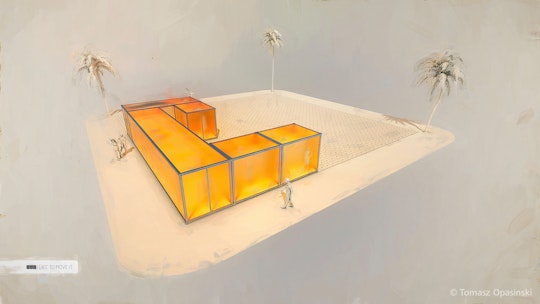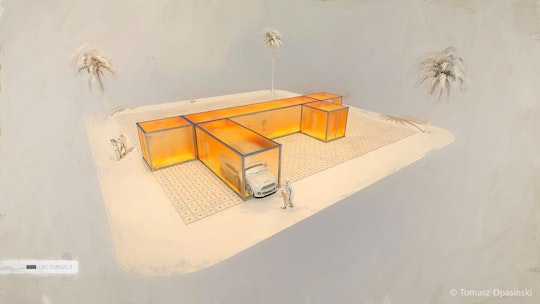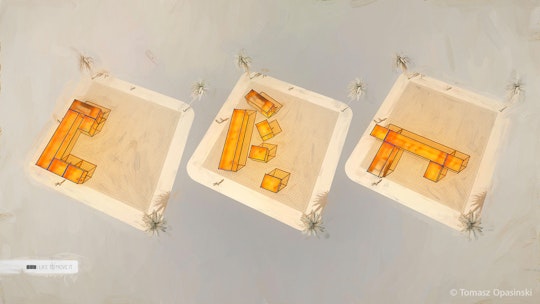
Illustrating His Dreams A visual artist explains how he used C4D and Photoshop to reimagine housing in 30 different ways.
Tomasz Opasinski moved to the US from Poland in 2001 and, for a while, he concentrated on making movie posters. But he also taught himself how to use Cinema 4D for poster design and, before long, he was working on the creative side of entertainment advertising, contributing to campaigns for TV, games, theatrical streaming and interactive industries. He also worked at Netflix, helping to engineer modular design systems for Netflix Originals and other projects.
Continually challenged by a head full of ideas he’d like to experiment with, Opasinski believes “artists have the tools to change the way people think about things” and they ought to use them as often as they can. Earlier this year, while under quarantine due to the coronavirus, he took his own advice to heart and spent 20 days using a combination of C4D and Photoshop on a project he calls CüB.
We asked Opasinski to talk about his creative process for CüB, which he describes as a personal project that allowed him to explore one of the many ideas in his head. This one being — what if we used shipping containers to design homes, but used them in entirely new and unconventional ways?
Tell us more about why you were interested in doing this project in particular.
One day during quarantine I was just sitting here, and I started thinking about how I’ve always wanted to design homes from shipping containers. I think that’s an interesting idea, but it’s always done in boring ways where everything is at 90-degree angles and the containers are black or brown or white. As an artist, I feel like there’s so much more that could be done with those. I mean, it’s somebody’s house and who wouldn’t want to be surrounded by things they love. In a way, our houses make a statement about us and, to me, this project is an illustration of the saying ‘a picture is worth 1,000 words.’
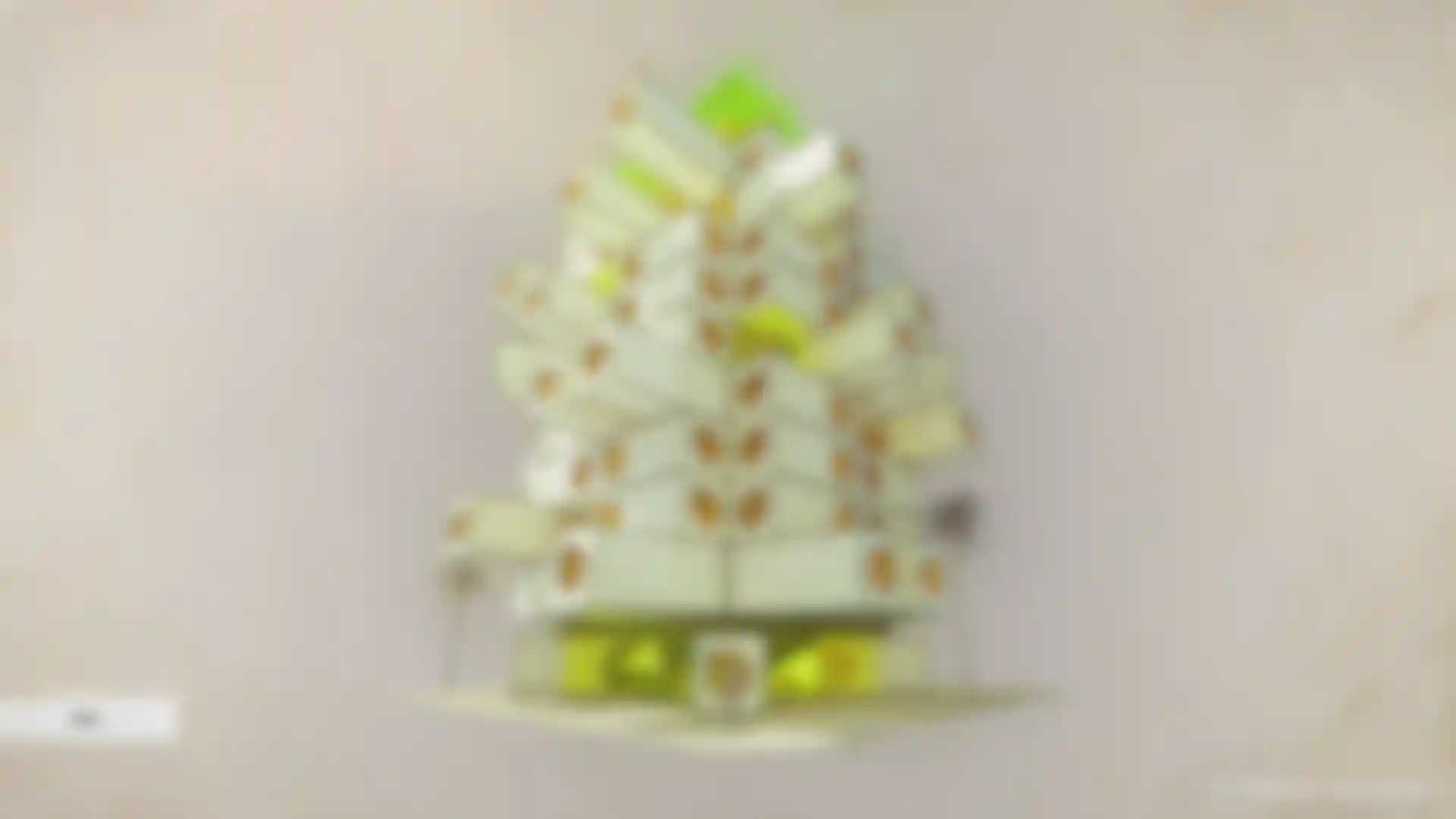

I’ve always been into system design and this was an opportunity to experiment with create a system of elements that could be customized to make different houses from containers. Doing this in C4D was so easy because I could move stuff around and click and render and then do some magic and Photoshop. I had originally given myself a month to create 30 different houses but, after a while, I was able to make one and a half projects per day, so it only took me 20 days to make 30 and then I stopped.
Who did you think of as the audience for these?
I think anyone from creatives to architects would be interested in how imagination was materialized with this project. It’s always interesting to have conversations about these types of subjects too, and my wife is an architect, so I did a presentation for her. A lot of artists are kind of locked in their minds and don’t know how to start things on their own. I think it’s important to just do it, just try. I’m only posting this project on my own website, but what if it inspired someone to actually do something real? There’s a housing crisis in LA and what if shipping containers could be used to house people in affordable ways?

One of my designs, "Akai", does address the question of what it would be like to attach hundreds of containers to create a very large building. I was inspired by housing in Japan, but what I’ve envisioned is just a fantasy right now. The containers would have to be made of much lighter metal, but it’s interesting to consider.
Walk us through your process for CüB.
I don’t sketch stuff much. In my head I had this idea that one container could be for parents and another for kids, and then there would be something grander separating the two spaces so there would be a place where everybody could be together that was not necessarily connected by doors and corridors. I started by getting four different shipping container models from TurboSquid, and I also got a model of a Mini Cooper and some palm trees from Cinema 4D’s library. Everything else was modeled by me in C4D, and all of the design elements were custom made as well.


I knew I wanted some kind of modular system, so I made a template for each of the projects. Each template contained four default-textured containers and, eventually, I didn’t have to redo models every time because I could just replace textures, like glass or wood, when I wanted to. Everything was lined up to scale and ready to go, and I had lighting and rendering preferences set up so, the initial work to prepare everything took a couple of days but then I just got to build stuff and render every day, which was what made this project doable in such a short time.
Describe some of your favorite CüB projects?
I really like "YinYang". I live in a neighborhood on the side of a hill and my freakin’ dream is to see the ocean, but I can’t because we’re too low. This design would allow me to press a button and change the alignment of the house to get that view. Also, when you align then house vertically with the press of a button, you can either hide or reveal the swimming pool below. It’s an awesome structure, really.
"I Like to Move It" is another one that’s pretty interesting. I haven’t seen anything like it, and it was inspired by Amazon’s packaging system. The idea is that your house can be reorganized, depending on your needs, like I could move my kids’ units to the back of the house if I was having a party. Or I could reposition the garage so it wouldn’t be in front of the house anymore. You could own this house for years and reorganize it as much as you want during that time.

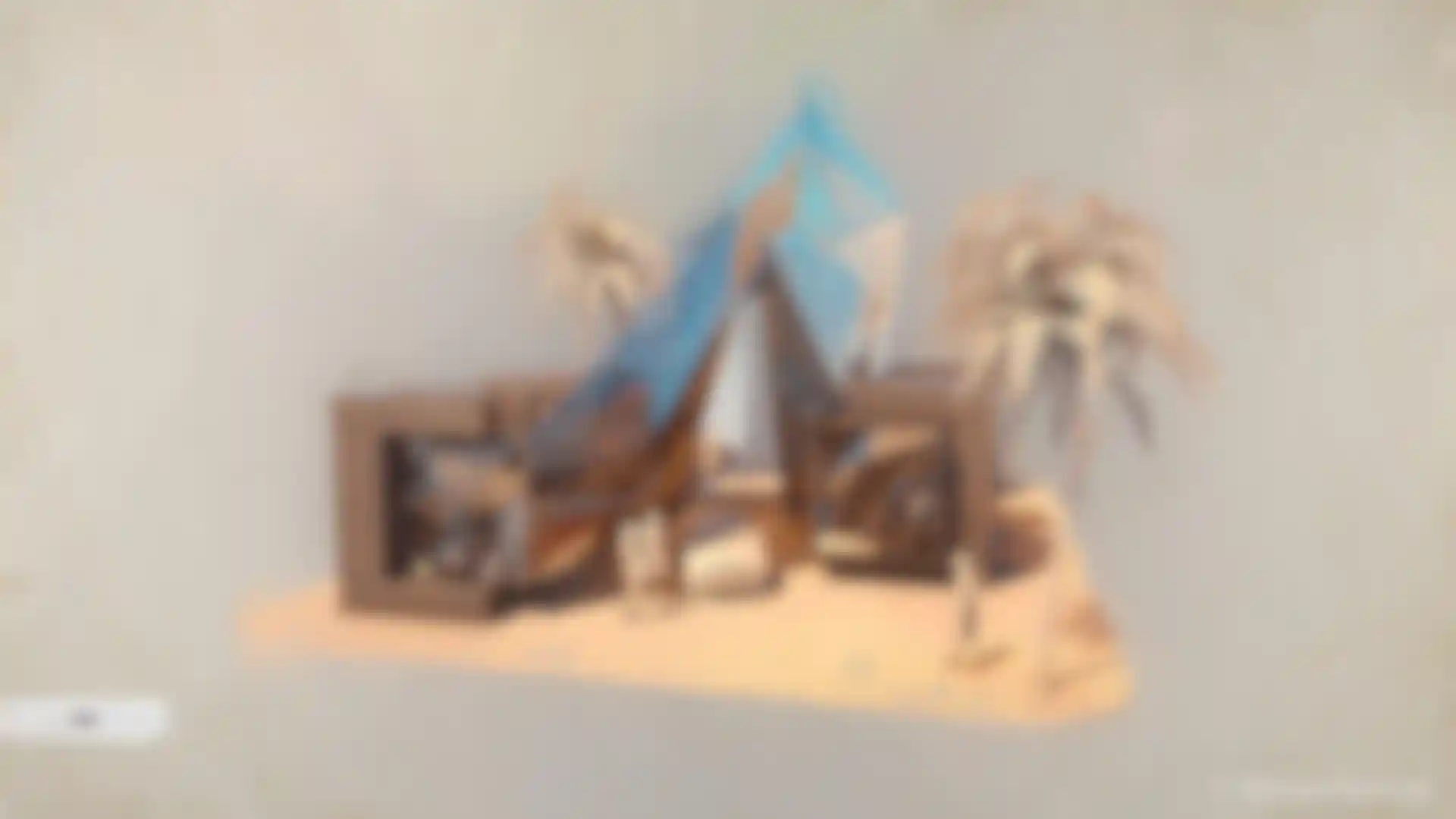
"Diamond" is also one of my favorites because I think it’s so weird that we keep one of the most expensive things we own in the garage. I love my Mini Cooper and I thought, what if we could change the way we design houses and garages, so cars are much more a central feature rather than hidden away.
How does working on something like this benefit you as an artist?
Visual artists can illustrate their dreams, which is pretty rare. I see design as a way to shape the future, and I like the mental exercise I get when I force myself to overcome challenges and try to visualize things in my head. I have so many ideas all the time and they’re hard to explain in words, but if I can create something visual, I can get my idea out there in a way people can understand. Some people do Sudoku, but this is my training and when projects come in, training like this helps me come up with solutions to clients’ problems. I like the challenge, it’s kind of like how you feel after you leave the gym.
